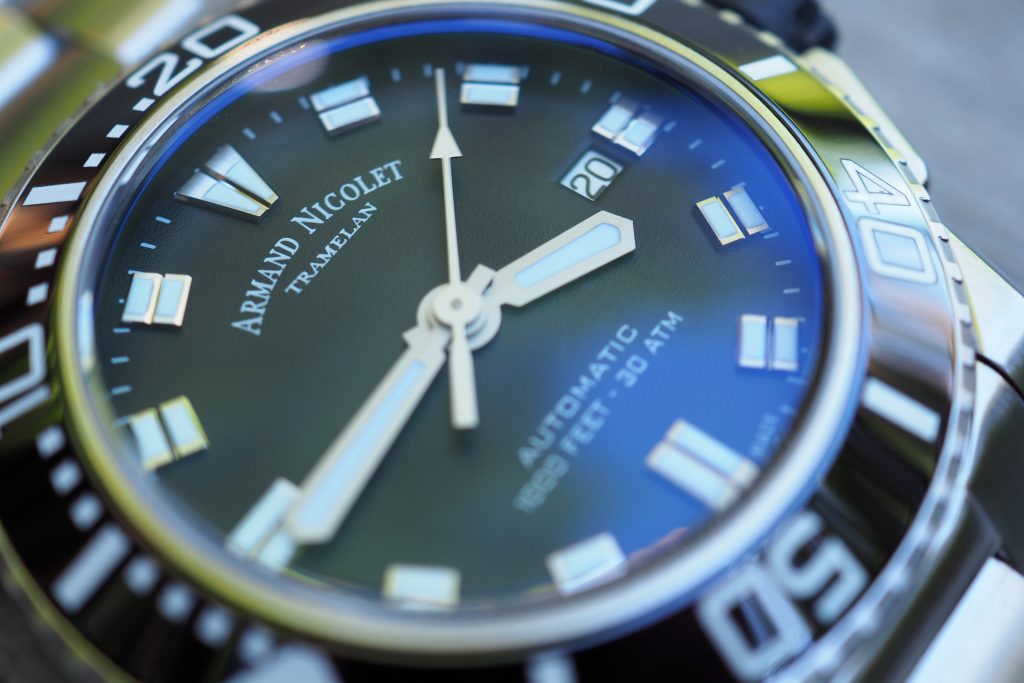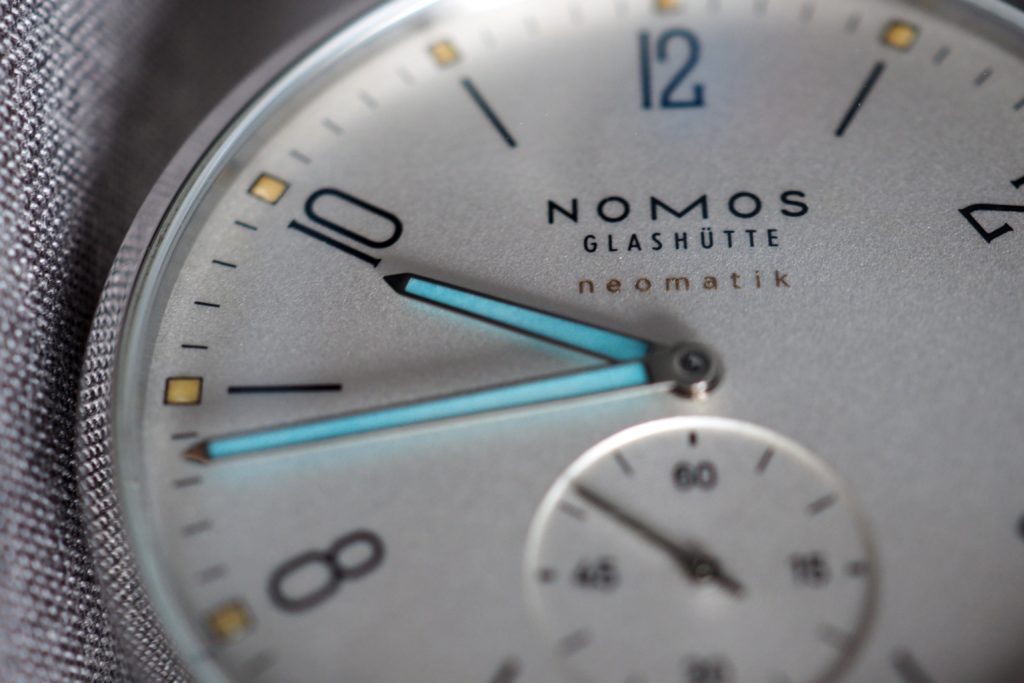
Among watch aficionados, one of the most frequent debates is between applied indices and painted indices. Peruse any watch forum, and you’ll see amateur horologists debating both sides of the issue and posting images of their favorite watch dials.
I’m not going to wade into the debate and tell you what I think is better or worse. I’ll let the people on the forums take care of that. But for those of you who are curious, or are just beginning to learn about watches, I’ve put together a quick guide, along with the pros and cons of each type of index.
Applied Indices

Applied indices are produced by creating the indices separately from the dial. This allows for a variety of designs, including layered designs with multiple parts to each index. Once the indices have been created, they’re then applied to the watch dial, typically with a high-quality industrial glue. If there are multiple layers, the layers can either be glued together before application or afterward.
If you listen to the people on the forums, you’ll often hear that applied indices are “premium”, “expensive”, or “nicer”. This is a mistaken perception. In fact, applied indices can be more or less expensive depending on a variety of factors, including the material and whether they’re applied by machine or by hand. There are, to be sure, some expensive, premium applied indices that are painstakingly glued on by hand by expert watchmakers. However, there are also some extremely cheap, “applied” indices that are stamped into the dial by machine. If Casio can stamp them into a $70.00 watch, it goes without saying that not all applied indices are high quality.
The main advantage of applied indices is the way they stand out from the dial. Because of their design, they have a 3D appearance, adding texture to the watch design. The disadvantage is that they can sometimes fall off after several years. This won’t be a problem if you’re buying a quality automatic watch. But if you’re going cheap, keep in mind that the glue quality may be questionable.
Painted Indices

As the name implies, painted indices are painted onto the dial rather than glued. In general, there seems to be a perception that painted indices are cheap or chintzy. But much like applied indices, there’s a wide variation in quality. Some, particularly on very cheap watches, are simply printed by machine, using an ink stamp or a laser printer. However, on a high-quality automatic watch, painted indices are painstakingly painted by hand, which requires a lot of labor by a highly qualified artist. The steady hand required for this job is truly remarkable. And, believe me, that type of talent is anything but cheap.
Painted indices have a flatter, 2D appearance, which doesn’t provide as much texture as an applied index. However, they allow for a wide variation of color, as well as for relatively easy customization. Different designs simply require different instructions for the artist, rather than manufacturing entirely different indices from scratch.
Painted indices also allow for more complex features than applied indices. For example, an artist can paint overlapping indices for subdials, which is virtually impossible to achieve with an applied index. Other complex features, such as railroad indexes, are also impossible to apply as a single, unified piece. However, they can be painted on with relative ease.
One reason that painted indices are perceived as cheap is that they’re often found on cheap watches. While these particular, cheap indices are printed by machine, they’re more durable than cheap applied indices, since there’s no risk of them wearing out or falling off.
Leave a Reply